Related Research Articles

Thomas Gainsborough was an English portrait and landscape painter, draughtsman, and printmaker. Along with his rival Sir Joshua Reynolds, he is considered one of the most important British artists of the second half of the 18th century. He painted quickly, and the works of his maturity are characterised by a light palette and easy strokes. Despite being a prolific portrait painter, Gainsborough gained greater satisfaction from his landscapes. He is credited as the originator of the 18th-century British landscape school. Gainsborough was a founding member of the Royal Academy.

Sir Jacob Epstein was an American-British sculptor who helped pioneer modern sculpture. He was born in the United States, and moved to Europe in 1902, becoming a British subject in 1910.

Queen's House is a former royal residence built between 1616 and 1635. It was built near the now demolished Greenwich Palace, a few miles downriver from the City of London and is now in the London borough of Greenwich. It presently forms a central focus of what is now the Old Royal Naval College with a grand vista leading to the River Thames. The Queen's House architect, Inigo Jones, was commissioned by Queen Anne of Denmark in 1616 and again to finish the house in 1635 by Queen Henrietta Maria. The Queen's House was commissioned by both Anne and Henrietta as a place to display artworks they had accumulated and commissioned; This includes a ceiling of the Great Hall that features a work by Orazio Gentileschi titled Allegory of Peace and the Arts.
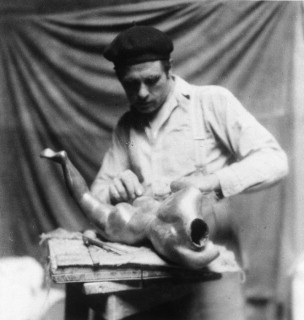
George Claude Leon Underwood was a British artist, although primarily known as a sculptor, printmaker and painter, he was also an influential teacher and promotor of African art. His travels in Mexico and West Africa had a substantial influence on his art, particularly on the representation of the human figure in his sculptures and paintings. Underwood is best known for his sculptures cast in bronze, carvings in marble, stone and wood and his drawings. His lifetime's work includes a wide range of media and activities, with an expressive and technical mastery. Underwood did not hold modernism and abstraction in art in high regard and this led to critics often ignoring his work until the 1960s when he came to be viewed as an important figure in the development of modern sculpture in Britain.
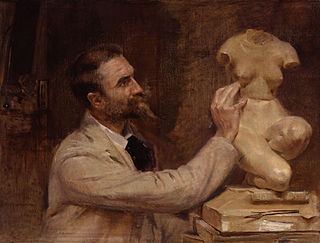
Edward Onslow Ford was an English sculptor. Much of Ford's early success came with portrait heads or busts. These were considered extremely refined, showing his subjects at their best and led to him receiving a number of commissions for public monuments and statues, both in Britain and overseas. Ford also produced a number of bronze statuettes of free-standing figures loosely drawn from mythology or of allegorical subjects. These 'ideal' figures became characteristic of the New Sculpture movement that developed in Britain from about 1880 and of which Ford was a leading exponent.
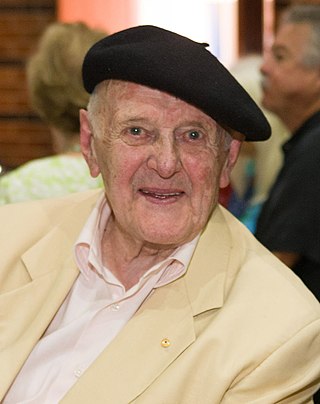
John Henry Olsen AO OBE was an Australian artist and winner of the 2005 Archibald Prize. Olsen's primary subject of work was landscape.

Sir John Campbell Longstaff was an Australian painter, war artist and a five-time winner of the Archibald Prize for portraiture. His cousin Will Longstaff was also a painter and war artist.

Albert Joseph Moore was an English painter, known for his depictions of languorous female figures set against the luxury and decadence of the classical world.
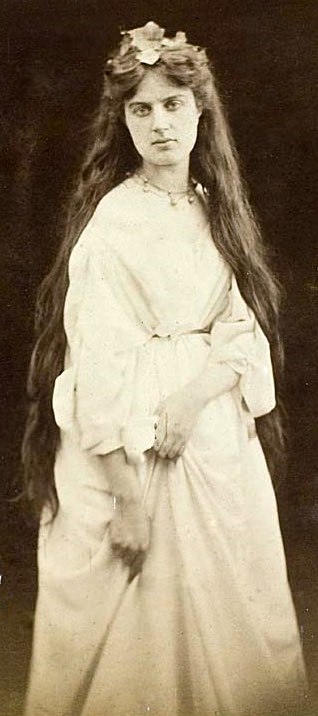
Marie Stillman was a British member of the second generation of the Pre-Raphaelite Brotherhood. Of the Pre-Raphaelites, she had one of the longest-running careers, spanning sixty years and producing over one hundred and fifty works. Though her work with the Brotherhood began as a favourite model, she soon trained and became a respected painter, earning praise from Dante Gabriel Rossetti and others.
Flora Marguerite Lion was an English portrait painter. Lion had a long and successful career and was known for her portraits of society figures, landscapes and murals.

Anna Airy was an English oil painter, pastel artist and etcher. She was one of the first women officially commissioned as a war artist and was recognised as one of the leading women artists of her generation.
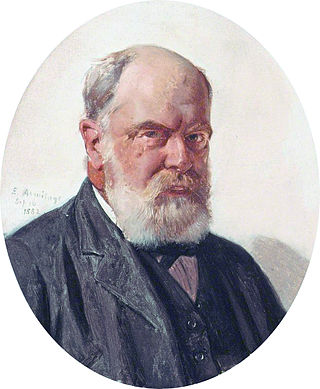
Edward Armitage was an English Victorian-era painter whose work focused on historical, classical and biblical subjects.
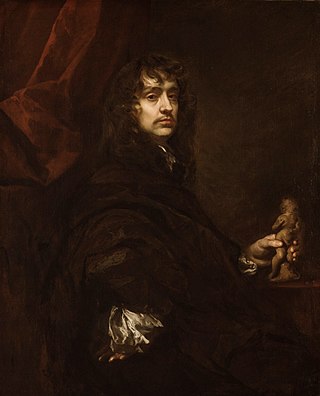
Sir Peter Lely was a painter of Dutch origin whose career was nearly all spent in England, where he became the dominant portrait painter to the court. He became a naturalised British subject and was knighted in 1679.

James Coutts Michie ARSA was a Scottish painter who specialised in landscapes and portraits.
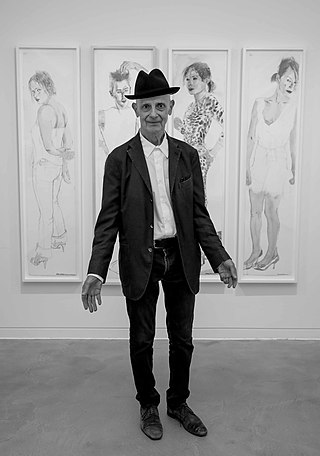
David Remfry is a British painter and curator. He served as the Eranda Professor of Drawing at the Royal Academy Schools from 2016 to 2018 and a Judge for the Royal Academy of Arts Charles Wollaston Award 2021. In 2023 he coordinated the Royal Academy of Arts Summer Exhibition. A retrospective of Remfry’s work, curated by Dr Gerardine Mulcahy-Parker, is planned for 2025 at Beverley Art Gallery, East Riding.

James McBey was a largely self-taught Scottish artist and etcher whose prints were highly valued during the later stages of the etching revival in the early 20th century. He was awarded an Honorary Doctor of Letters by Aberdeen University.

Constance Stokes was an Australian modernist painter who worked in Victoria. She trained at the National Gallery of Victoria Art School until 1929, winning a scholarship to continue her study at London's Royal Academy of Arts. Although Stokes painted few works in the 1930s, her paintings and drawings were exhibited from the 1940s onwards. She was one of only two women, and two Victorians, included in a major exhibition of twelve Australian artists that travelled to Canada, the United Kingdom and Italy in the early 1950s.
Sir Herbert James Gunn RA RP was a Scottish landscape and portrait painter.

Robert Inerarity Herdman RSA RSW was a Victorian artist specialising in portraiture and historical compositions. He is also remembered for a series of pastoral scenes featuring young girls.
Allan Mitelman is an Australian painter, printmaker and art teacher who arrived in Australia in 1953.
References
- 1 2 3 4 "McCULLOCH, Joseph Ridley Radcliffe 1893 - 1961". Suffolk Artists. Retrieved 7 August 2023.
- ↑ "McCulloch, Joseph". Union list of Artists display names on-line. The J. Paul Getty Trust. Retrieved 7 August 2023.
- ↑ "Joseph Ridley Ratcliffe McCulloch". Aberdeen Archives, Galleries and Museums.
- ↑ "Tony Smith, GC". IWM Archives. Retrieved 7 August 2023.
- ↑ "Joseph McCulloch (1893-1961), Artist". National Portrait Gallery. Retrieved 7 August 2023.
- ↑ Thorpe, Vanessa (2023). "The war hero without a name: London museum hunts for Wren's identity". The Observer. Retrieved 7 August 2023.